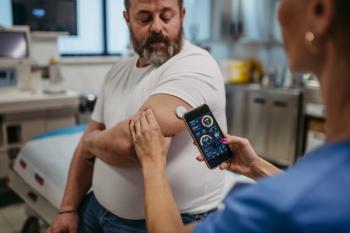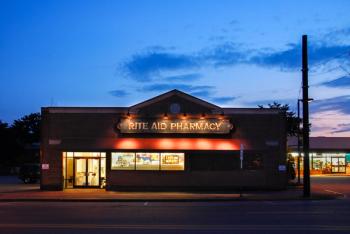- July 2025
- Volume 91
- Issue 7
The Changing Landscape of Pharmacy Accessibility
Key Takeaways
- Pharmacy closures, driven by declining sales, PBM influence, and staffing issues, threaten equitable healthcare access.
- Pharmacy deserts, with limited pharmacy access, negatively impact patient care, especially for chronic conditions, and community health.
Pharmacy deserts can have far-reaching consequences, especially in rural and low-income communities.
Pharmacy accessibility means that all individuals receive equitable pharmacy services, regardless of background, abilities, or circumstances. Overall, community pharmacies have done an excellent job of providing accessibility to their patients, including physical access, convenience, cost savings, and catering to patients with diverse needs.
A 2022 study reported that approximately 90% of the United States population lives within 5 miles of a pharmacy.1 Unfortunately, the recent trend of pharmacy closures threatens equitable access to health care.
Factors Affecting Closures
Several key factors are contributing to the wave of pharmacy closures across the country. One is declining front-of-store sales, as purchasing OTC drugs, vitamins, supplements, and other health and beauty products online has become commonplace. The convenience of online shopping, along with various shipping options, has significantly reduced foot traffic in traditional brick-and-mortar pharmacies.
Additionally, the role of pharmacy benefit managers (PBMs) cannot be overlooked. These third-party administrators act as intermediaries between drug manufacturers, pharmacies, and insurance companies. PBMs negotiate prices, establish formularies, and process claims, while also creating preferred networks of pharmacies.2 Pharmacies that are not included in these networks or that receive lower reimbursement for dispensed drugs may struggle to remain profitable.
Overexpansion and staffing issues also play a role. Some chain pharmacies have overextended their footprint, leading to too many stores in certain areas and necessitating the closure of underperforming locations. Compounding this issue, many pharmacies face ongoing staffing shortages, which hinder efficient operations and compromise the ability to deliver quality patient care.
Finally, changes in consumer behavior—including the increasing preference for mail-order prescriptions—have further contributed to the decline in brick-and-mortar pharmacy sales. This trend often coincides with PBM mandates.
Pharmacy Deserts
A pharmacy desert is a geographical area where residents have limited or no access to a pharmacy. This can be because there is no pharmacy within a specified distance (1 mile in urban areas and 10 miles in rural areas) or because the available pharmacy is not accessible to a significant percentage of the population due to factors such as income, transportation, or health condition.
According to research findings from the Yale School of Medicine, among 323.5 million people in the US at the time of the study, 17.7% lived in a pharmacy desert based on measurements of travel time. Additionally, nearly 9% of people lived in an area served by a single pharmacy, which the researchers dubbed “keystone pharmacies.”3
Furthermore, in 18 states, more than 20% of the population lived in pharmacy deserts. In 5 states—New Hampshire, South Dakota, West Virginia, Maine, and Vermont—that number was more than 25%. Finally, the researchers noted that the most rural areas were disproportionately reliant on keystone pharmacies, and independent pharmacies were more likely than chains to serve as keystones.3
Impact on Patients
Pharmacy deserts can be detrimental to patient care, especially for older patients who often take multiple medications and heavily rely on pharmacists’ advice for managing them. Patients may be unable to obtain critical medications, resulting in poor adherence and negative outcomes. Furthermore, delays in medication access can exacerbate chronic conditions, such as diabetes, hypertension, and asthma, leading to increased hospitalization rates.
Pharmacist-led services, such as medication counseling, medication therapy management, comprehensive medication reviews, and general medical advice and recommendations, are also limited for patients living in a pharmacy desert. These deserts reduce access to critical health care services, such as vaccinations, health screenings, and point-of-care testing. The lack of access to immunization services may lead to lower vaccination rates and vulnerabilities to infectious diseases in these communities.4
Finally, patients may have to travel farther for their medications, costing them more in transportation and time. This can be particularly difficult for those with mobility or financial limitations.
Impact on Communities
Pharmacy deserts can have far-reaching consequences, especially in rural and low-income communities. Socially vulnerable communities that experience poverty, lack of access to transportation, and crowded housing have a disproportionately high number of pharmacy deserts compared with non–socially vulnerable communities.4
As discussed above, reduced vaccination rates due to pharmacy deserts result in increased preventable diseases. Patients in these areas also may lack access to basic OTC products such as cough and cold medications, highlighting the profound impact on community health. Additionally, pharmacy deserts can result in long-term economic consequences for the community, especially for businesses that rely on pharmacy services, such as hospitals and clinics.
Solutions
The ongoing closure of retail pharmacies indicates that pharmacy deserts will likely continue to develop. Therefore, it is imperative that innovative solutions are employed to reduce the negative health and economic consequences that go along with health deserts.
Mobile units, staffed with pharmacists and technicians, can be deployed to underserved areas, where they provide prescription and OTC medications as well as other pharmacy services on scheduled visits. Separately, telepharmacy uses telecommunications technology, such as video conferencing, online platforms, and other digital tools, to provide pharmacy care to patients. This can expand access to underserved communities and improve patient outcomes.5
Mail-order pharmacies ship prescription medications directly to patients. Mail-order pharmacies can offer cost savings depending on insurance coverage and are well suited for filling medications for chronic conditions, as they offer 90-day supplies and automatic refills.
Finally, financial incentives may help existing pharmacies stay in business or encourage new pharmacies to open in underserved areas. These incentives could include supplemental dispensing fees, increased reimbursement fees, PBM regulations, or grants and tax benefits.
Conclusion
Pharmacy accessibility has taken a recent downturn with the trend of pharmacy closures. This has had a profound negative impact on the health and economy of underserved communities. This trend is set to continue, creating an increase in pharmacy deserts. The importance of innovative solutions to provide pharmaceutical care to these communities cannot be overstated.
REFERENCES
Berenbrok LA, Tang S, Gabriel N, et al. Access to community pharmacies: a nationwide geographic information systems cross-sectional analysis. J Am Pharm Assoc (2003). 2022;62(6):1816-1822. doi:10.1016/j.japh.2022.07.003
Martin K. What pharmacy benefit managers do, and how they contribute to drug spending. The Commonwealth Fund. March 17, 2025. Accessed June 4, 2025. https://www.commonwealthfund.org/publications/explainer/2025/mar/what-pharmacy-benefit-managers-do-how-they-contribute-drug-spending
Mathis WS, Berenbrok LA, Kahn PA, Appolon G, Tang S, Hernandez I. Vulnerability index approach to identify pharmacy deserts and keystone pharmacies. JAMA Netw Open. 2025;8(3):e250715. doi:10.1001/jamanetworkopen.2025.0715
Wittenauer R, Shah PD, Bacci JL, Stergachis A. Locations and characteristics of pharmacy deserts in the United States: a geospatial study. Health Aff Sch. 2024;2(4):qxae035. doi:10.1093/haschl/qxae035
Baldoni S, Amenta F, Ricci G. Telepharmacy services: present status and future perspectives: a review. Medicina (Kaunas). 2019;55(7):327.doi:10.3390/medicina55070327
Articles in this issue
4 months ago
Product News for July 20254 months ago
Pharmacy Policy Updates for July 20255 months ago
OTC Case Studies: Family Planning5 months ago
Invest a Few Minutes in Inhaler CounselingNewsletter
Stay informed on drug updates, treatment guidelines, and pharmacy practice trends—subscribe to Pharmacy Times for weekly clinical insights.





















































































































































































































